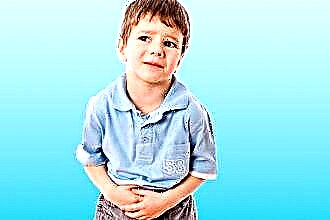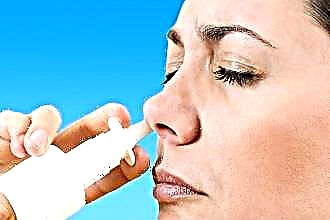Timely and correct diagnosis, as well as adequate therapy, will help to cure a wet cough in a child.
Etiology and pathogenesis
 Cough is one of the most common symptoms seen in children. This is a complex defense reaction of the body, aimed at removing bronchial secretions, foreign particles, microorganisms from the lungs and bronchi. Thanks to coughing, the patency of the respiratory system is restored.
Cough is one of the most common symptoms seen in children. This is a complex defense reaction of the body, aimed at removing bronchial secretions, foreign particles, microorganisms from the lungs and bronchi. Thanks to coughing, the patency of the respiratory system is restored.
A wet cough is called a productive cough. Such bronchospasm is accompanied by the formation of bronchial secretions, followed by its excretion.
Most often, an unpleasant symptom occurs in the cold season, summer and spring are a fairly favorable period. The occurrence of a wet cough (without flu or ARVI symptoms) in the summer is associated with the effect of an allergen on the body during the flowering of some plants. An important role in this is played by a hereditary predisposition.
Exposure to the allergen causes swelling of the mucous membrane of the respiratory tract, which makes it difficult to release secretions. Much mucus accumulates in the bronchi and a cough occurs. Elimination of the allergen allows you to get rid of cough without the use of mucolytics and antibacterial agents.
Important! Cough is the body's defensive reaction. Its appearance is the first signal for parents about the presence of a pathological process in the child's body.
 Common causes of wet cough are acute respiratory infections with localization of the inflammatory process in the lower (larynx, trachea, bronchi and lungs) and upper (nasopharynx, oropharynx) sections.
Common causes of wet cough are acute respiratory infections with localization of the inflammatory process in the lower (larynx, trachea, bronchi and lungs) and upper (nasopharynx, oropharynx) sections.
Causes of a wet cough:
- acute and chronic bronchitis;
- pneumonia;
- bronchial asthma;
- foreign body in the respiratory tract;
- bronchiectasis;
- lung abscess;
- tuberculosis;
- allergy.
A wet cough is the first sign of diseases of the respiratory system caused by pathogenic microflora. It is accompanied by an increase in the formation of bronchial mucus. The accumulation of viscous secretions in the lumen of the bronchi provokes the addition of bacterial microflora and complication of the inflammatory process. There is a swelling of the mucous membrane and the motor activity of the ciliated epithelium decreases, which complicates the removal of secretions from the lumen of the bronchi. With the accumulation of sputum, a favorable environment is created for the reproduction and development of pathogenic microflora, which is impossible with productive coughing.
In children aged 2-4 months, the cough reflex is very weak, which aggravates the course of the disease, accompanied by the formation of sputum. The situation has been improving since six months.
 The onset of bronchospasm is often preceded by rhinitis and tonsillitis. The secreted mucus irritates the mucous membrane of the upper respiratory tract when it flows down the pharynx, which provokes a cough reflex. A strong attack is noted in the morning and evening, especially with a change in body position.
The onset of bronchospasm is often preceded by rhinitis and tonsillitis. The secreted mucus irritates the mucous membrane of the upper respiratory tract when it flows down the pharynx, which provokes a cough reflex. A strong attack is noted in the morning and evening, especially with a change in body position.
The appearance of a cough is promoted by:
- hypothermia;
- decreased immune status;
- stress factors (attendance at preschool and school educational institutions);
- contact with sick children in the children's team;
- communication with sick family members;
- malnutrition;
- violation of the microclimate in the room;
- lack of walks in the fresh air.
The course and resolution of the inflammatory process depends on the characteristics of the bronchial secretions: viscosity, elasticity and fluidity or adhesiveness (the ability of mucus to separate during a cough thrust).
Symptoms
Cough is not a disease, but a symptom of a pathological process (underlying disease) in a child's body.
 A cough with sputum in a child is a characteristic symptom in acute bronchitis, obstructive chronic bronchitis. Bronchiectasis is always accompanied by a cough. With pneumonia, coughing up is a positive sign that indicates the beginning of recovery.
A cough with sputum in a child is a characteristic symptom in acute bronchitis, obstructive chronic bronchitis. Bronchiectasis is always accompanied by a cough. With pneumonia, coughing up is a positive sign that indicates the beginning of recovery.
Signs of a wet cough:
- the release of viscous sputum during a cough;
- bronchial obstruction (difficult separation of secretions with sufficient presence in the lumen, frequent coughing);
- shortness of breath and wheezing.
The nature of the mucus secreted will indicate the cause of the wet cough. The secret is slimy and purulent. Sputum assessment criteria: viscosity, transparency, color.
- When coughing of a viral nature, the secreted mucus is transparent, with a typical fluidity.
- The bacterial infection produces a viscous, yellow-green mucus that is difficult to separate.
- With an allergic wet cough, the secretion of "glass" sputum is observed, which is difficult to separate with its apparent transparency.
 Milky-white discharge is characteristic of wet coughs of fungal origin.
Milky-white discharge is characteristic of wet coughs of fungal origin.
At the age of up to 2-3 months, respiratory diseases can occur with an erased clinical picture with a sudden deterioration of the condition.
Associated symptoms with a wet cough that require medical attention:
- Feeling unwell - lethargy, apathy, lack of appetite, pallor.
- Shortness of breath (rapid breathing, accompanied by increased breathing) is a sign of damage to the lower respiratory tract.
- An increase in body temperature (especially with developing fever) to 39 ° C.
Important! A frequent cough with a fever above 38 ° C in a child under 3 months of age requires special attention.
Course of the disease
 A cough with sputum in a child with acute inflammation indicates the resolution of the pathological process. In the chronic course of the disease, the appearance of a wet cough indicates an exacerbation of the process.
A cough with sputum in a child with acute inflammation indicates the resolution of the pathological process. In the chronic course of the disease, the appearance of a wet cough indicates an exacerbation of the process.
Depending on how long a wet cough lasts, the course of the disease is:
- acute (up to 3 weeks);
- subacute (3-8 weeks);
- chronic (3-8 weeks or more).
Cough in children is often latent due to the physiological age-related inability to cough up sputum. Young children (2 years old or less) cannot cough. Cough discharge at the age of a child of 1 to 5 years is more difficult to separate than in older children. Sputum is characterized by increased viscosity and poor adhesiveness.
If bronchospasm is caused by hypothermia, then the disease, as a rule, has an acute course and can pass without specific treatment. A complicated process, provoked by pathogenic microflora, lasts about a month, proceeds subacutely or becomes chronic.
Treatment
First of all, you need to choose funds that affect the strength, frequency and nature of the cough. In a productive process, they resort to the use of mucolytics, expectorants and antitussives, which have antimicrobial, anti-inflammatory, local anesthetic and analgesic effects.
 Modern pharmacology has herbal medicines, the adequate use of which is quite effective as monotherapy. The active ingredients - alkaloids and saponins of medicinal herbs - stimulate the work of the bronchial epithelium, moderately increasing the secretion of mucus.
Modern pharmacology has herbal medicines, the adequate use of which is quite effective as monotherapy. The active ingredients - alkaloids and saponins of medicinal herbs - stimulate the work of the bronchial epithelium, moderately increasing the secretion of mucus.
Almost all phytopreparations have a polytherapeutic effect and are aimed at liquefying and actively removing pathological secretions from the lungs and bronchi.
For the treatment of a disease with the secretion of mucus in a sufficient amount, the use of mucolytics will be optimal. Syrups are used to treat wet cough in children 2 years of age and older as monotherapy. Perhaps their combination with other drugs (antibiotics, antihistamines).
Important! It is strictly forbidden to combine mucolytics with antitussive drugs.
 Scanty discharge requires the use of expectorants. They activate bronchial secretion and improve the motor ability of the ciliated epithelium.
Scanty discharge requires the use of expectorants. They activate bronchial secretion and improve the motor ability of the ciliated epithelium.
The action of antitussive drugs is aimed at suppressing the cough reflex and reducing the strength of the cough push, which is contraindicated in the presence of a large amount of mucus in the lumen of the bronchi and trachea. Otherwise, there will be an excessive accumulation of inflammation products in the respiratory tract and an aggravation of the pathological process.
Important! Medicines that suppress the cough reflex are prescribed only by a doctor after examining the child and establishing a diagnosis.
Often a wet cough in a child does not require special treatment if the doctor does not notice changes in the general condition. The use of a vitamin and mineral complex and immunoprotectors will be sufficient. It is recommended to give your child more warm drinks.
Helps eliminate cough syndrome:
- Frequent and regular airing of the room.
- No tobacco smoke in the presence of a child.
- Increase in humidity in the room.
- Chest massage (vibration method).
 Using the game "blowing a balloon" for older children. A deep breath provokes a reflex forced expansion of the airways and the onset of a cough reflex. Active ventilation of the lungs occurs.
Using the game "blowing a balloon" for older children. A deep breath provokes a reflex forced expansion of the airways and the onset of a cough reflex. Active ventilation of the lungs occurs.
- Laying out a one-year-old baby on his stomach (remedial gymnastics). Exercise promotes coughing due to irritation of the mucous membrane by sputum flowing down the wall of the nasopharynx.
- Stimulating cough in infants with a spoon. The root of the tongue becomes irritated, which contributes to the emetic-cough reflex. Manipulation requires certain skills that allow you to stop the procedure on time, without causing vomiting, but only provoking coughing up. You can stimulate a cough only before feeding or half an hour after it.
Important! Self-treatment of cough without prior consultation with a pediatrician, especially in children under 2 years of age, leads to a complication of the inflammatory process.

 Milky-white discharge is characteristic of wet coughs of fungal origin.
Milky-white discharge is characteristic of wet coughs of fungal origin. Using the game "blowing a balloon" for older children. A deep breath provokes a reflex forced expansion of the airways and the onset of a cough reflex. Active ventilation of the lungs occurs.
Using the game "blowing a balloon" for older children. A deep breath provokes a reflex forced expansion of the airways and the onset of a cough reflex. Active ventilation of the lungs occurs.

